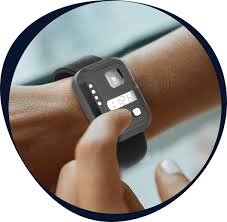Actigraphy is a method of measuring and monitoring movement or activity patterns, typically using a small device worn on the wrist or ankle. This device, called an actigraph, can help healthcare professionals assess sleep-wake cycles, identify potential sleep disorders, and track circadian rhythm patterns.
The actigraph contains an accelerometer, which measures movement. This data is then stored and analyzed to determine periods of activity (indicating wakefulness) and relative stillness (suggesting sleep). Our actigraph devices also have advanced light sensors that can measure exposure to light for the duration of the test.
- Actigraphy tests last 2 to 4 weeks
- The Actiwatch should be worn in the non-dominant wrist
- Completing the provided sleep logs is very important

What is actigraphy valuable for?
- Assessing sleep patterns: Identifying normal sleep-wake cycles, or patterns associated with disorders like insomnia or circadian rhythm sleep disorders.
- Diagnosing sleep disorders: Helping to differentiate between various sleep disorders, including advanced sleep phase syndrome, delayed sleep phase syndrome, and shift work disorder.
- Monitoring treatment: Tracking the effectiveness of treatments for sleep disorders, such as medications or behavioral interventions.
